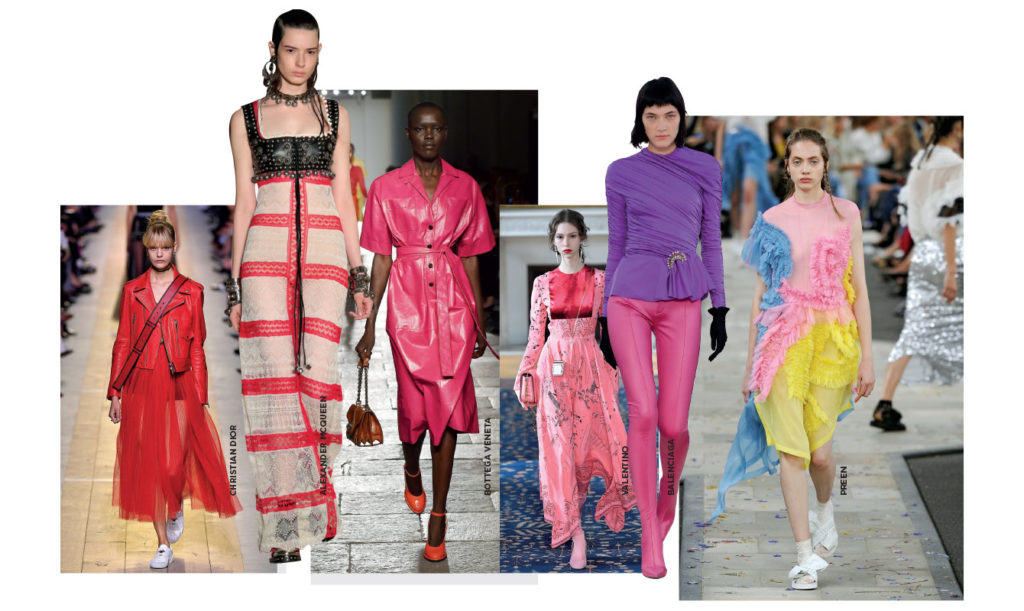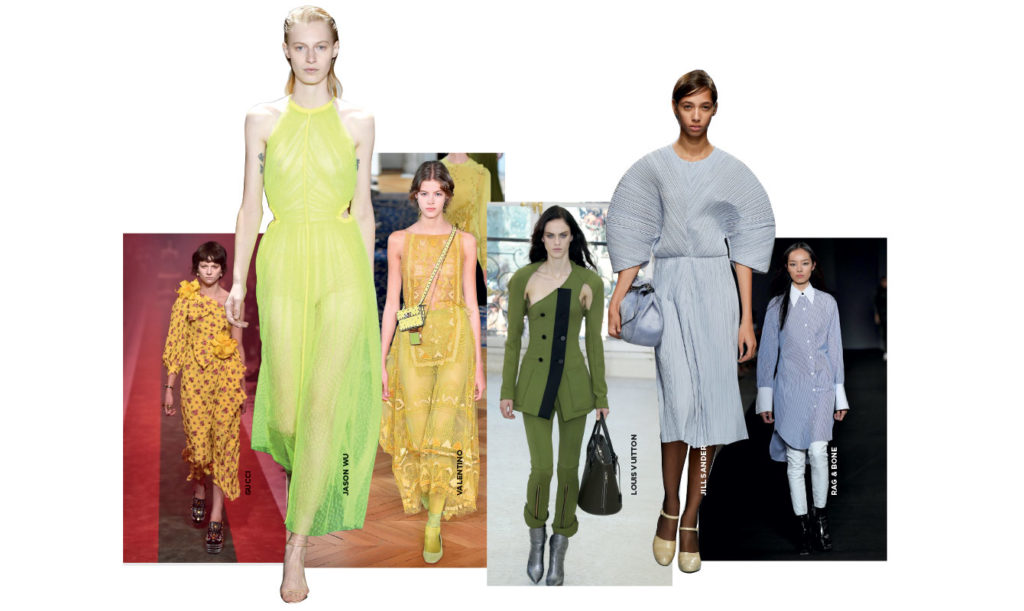In the midst of 2016’s infamous upheaval, Stella McCartney gave us the spring collection we needed. With her whimsical pieces emblazoned with ice cream cones, polka dots, and messages like “all is love,” she capped off the show with a dance party, with models taking to the runway to gleefully bust out some moves. Mainly, she gave us a brief reprieve from our daily grind and injected us all with much-needed joy. And I’ll take it. Months into 2017, and the social and political landscape is bleak. Daily, we’re being met with bad news that trumps news of the day before and it can be hard not to log off, curl up, and countdown to 2020.
Which means fashion may be the last thing on our minds. But the thing about crises is that surviving them relies on sustenance. And sustenance consists of anything and everything that brings you joy or refills that mental and emotional pool. It can be through movies, book clubs, or a manicure. You can recharge through walks in the woods, or window shopping with a latte. And you can escape through fashion. Because escapism isn’t the abandonment of social responsibility, it’s something that will give you the strength to uphold it.

Which is why fashion this year has offered a welcome break from reality. Because where the vivid yellows seen in collections by Gucci, Valentino, and Jason Wu may seem like typical homages to summer sunlight, they also offer an aesthetic respite from the political sludge we feel coated in. In the same way, pink made its mark on the springtime spectrum, weaving itself through collections by Balenciaga, Celine, and Givenchy—which make sense when you consider the relationship between the colour pink and psychology. Pink has long been attributed to femininity and romance, but is also noted for its calming effects and relation to optimism. Bottega Veneta‘s fuchsia leather coat and Balenciaga’s shocking pink spandex not only command attention, but their vibrancy serves to distract us—at least momentarily—from the mundanity of our day-to-day business.
But we can get even more lost in fashion if we want to. Where retail therapy or “creating looks” have been consistent go-tos in the wake of bad news, this season’s celebration of dress-up urges us to check out of our 21st-century norms and delve into classical romance, whether via the ruffles of Preen, the empire waists of McQueen, or the high lace collars of Erdem. (And don’t forget the puffed sleeves at Marc Jacobs.)
Although that romance extends to what we over-romanticize, too: wearing Lacoste’s robes would suggest a life of leisure, while the pop-art floral prints of Rosie Assoulin transport us back to the mid-to-late nineties. Even Rag & Bone’s pinstripes or Miu Miu’s trench coats—pieces we’d typically see on Wall Street or in the White House—allow us the option of re-defining their narrative and adapting it to suit our own. Sure, collared shirts may make up the dress code of most government officials, but we can wear them any way we want with whatever pieces we want. Frankly, the only style code we need to abide by is the one we’ve established on our own terms. Which may also explain spring and summer’s freewheeling approach to seasonal trends—and also the way we can flip them, too. The sharp shoulders and strong tailoring at Givenchy, Jil Sander and Louis Vuitton could be interpreted as a nod to eighties conservatism, but more importantly, they can double as the armour needed to resist and power up. Plus, femininity is fluid—as we saw from the combination of ruffles, frills, and traditionally masculine shapes at Dior.

While common themes between seasonal collections are still present (see: bright colours, pop art and florals), there are so many options in terms of colour, texture, and cut that it’s impossible not to use fashion as a means of distraction therapy. Especially since the most eye-catching pieces were paired with what most of us already have. Monse’s sequined skirt was worn with a crisp white button-up, while Tom Ford’s pink fur-lined coat broke up the monochromatic vibe most of us settle into come winter. In fact, most looks left room for personal interpretation.
Which is exactly what fashion needs to be right now, particularly since on top of granting us an escape, fashion also provides a form of physical protection—a means of building ourselves up against the harshness of the world. And while the girlish femininity of Mary Katrantzou and Erdem may not seem like avenues for revolution, it’s important to remember that it’s up to the wearer to decide what each piece means. Because that’s the beauty of escapism: your wardrobe, your world, your rules.
Whether providing a diversion through dress-up to break up the monotony of day-to-day life, or acting as an alternative to the political and societal norms we’re inflicted by, fashion has been the place in which to seek refuge. And while it won’t solve our problems, it will provide sustenance (valuable, beautiful sustenance), whether through the joy of sifting through pieces we have already to create the looks we want or the battle armour we need, or losing ourselves in glorified Elizabethan-era costumes.
Which, for the record, you can also wear when, and if, you still want to curl up and cry.
By Anne T. Donahue.
